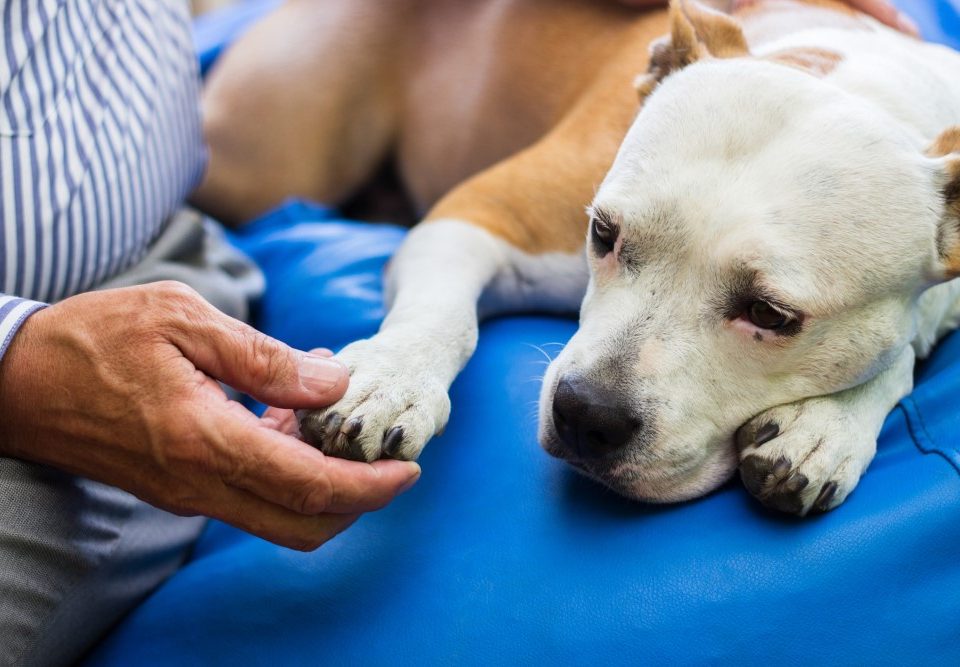
Your Cat Is Breathing Fast? Probable Reasons And Warning Signs
August 5, 2021
When to Euthanize a Cat with Feline Dementia
August 13, 2021Cushing’s Disease In Dogs

Young lady holding her dog. The pet has Cushing's Disease In Dogs.
Cushing’s disease in dogs also goes by the long-winded name of Hyperadrenocorticism. The condition relates to a dog over-producing cortisol, a crucial steroid hormone.
Regular production of cortisol occurs through the adrenal glands, located adjacent to the dog’s kidneys. As briefly mentioned previously, cortisol production is a crucial part of a dog’s bodily function. However, over-production can result in your dog becoming ill.
Types of Cushing’s Disease
Cushing’s disease in dogs presents in two different forms. One form is when your dog’s pituitary gland, located around the lower section of the brain, over-produces adrenocorticotropic hormone. In this case, the adrenal gland receives no signal to produce balancing cortisol.
With the other form of the condition, your dog is producing an excessive amount of cortisol. In most cases, around 85%, the cause of the issue is in the pituitary gland rather than the adrenal. However, with both, the condition arises due to a tumour in the gland. For most pets, these tumours have no other adverse effects other than over-producing cortisol.
Signs & Symptoms
A common symptom and obvious sign of Cushing’s Disease in dogs is your dog eating and drinking more. The obvious signs of these are that your dog’s weight will increase, and they will urinate more frequently.
Other signs and symposium include the following:
- Bladder infections.
- Diabetes.
- Excessive panting.
- Hair thinning.
- Muscle wasting.
- Potbelly.
- Skin deterioration.
Diagnosing Cushing’s Disease In Dogs
In most cases, your vet can initially diagnose the condition from your dog’s appearance and medical records. However, for a complete diagnosis, your dog may require several blood tests.
Dynamic blood testing is the most common form of diagnosis, and this is completed following a CTH or dexamethasone. This procedure can typically be done as a day patient at your veterinary surgery. Your dog has an anti-inflammatory, immunosuppressive drug injected into its blood system. Your vet can then conduct an assessment of your dog’s blood.
Treatment
Having received a diagnosis for Cushing’s Disease, the most likely first course of action is that your vet will prescribe your dog Trilostane. This drug reduces the levels of cortisol being produced in your dog’s adrenal glands.
Reducing cortisol production to the correct level is crucial. Still, it is also critical not to exceed the required amount of reduction, as doing so can lead to a condition known as Addisonian Crisis. When undergoing cortisol production-reducing procedures, your dog will need to have regular blood tests to ensure its cortisol levels remain adequate.
Treating Cushing’s disease in dogs rarely involves surgery. However, this can be the case sometimes, and it is a complex procedure involving significant risks. Therefore, surgery is only considered as a last resort to treat your dog.
Cushing’s disease often presents with particular side effects such as skin and metabolism issues. To help treat these side effects, your vet may recommend that you adjust your dog’s diet or give your pet certain food supplements. These supplements may include borage oils, Omega-3, and other fish oils. Although these will not cure Cushing’s disease, they will help with your dog’s overall condition.
Cushing’s Disease In Dogs – Life Expectancy
Early treatment of Cushing’s disease can result in a long and healthy life for your dog. However, if you leave it untreated, the disease will affect your dog’s life expectancy significantly.
With Cushing’s disease, as other conditions, always consider your dog and its quality of life when deciding the best treatments. In the devastating situation of considering letting your pet go, Cloud 9 Vets can advise you on dignified, compassionate pet euthanasia at home.


